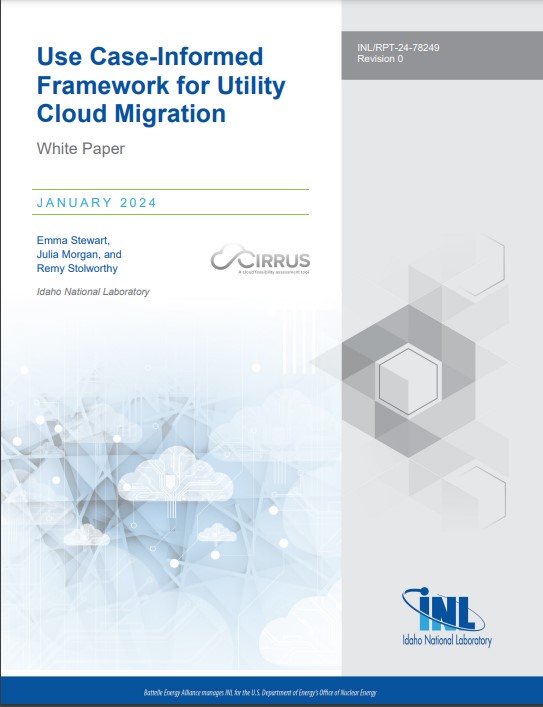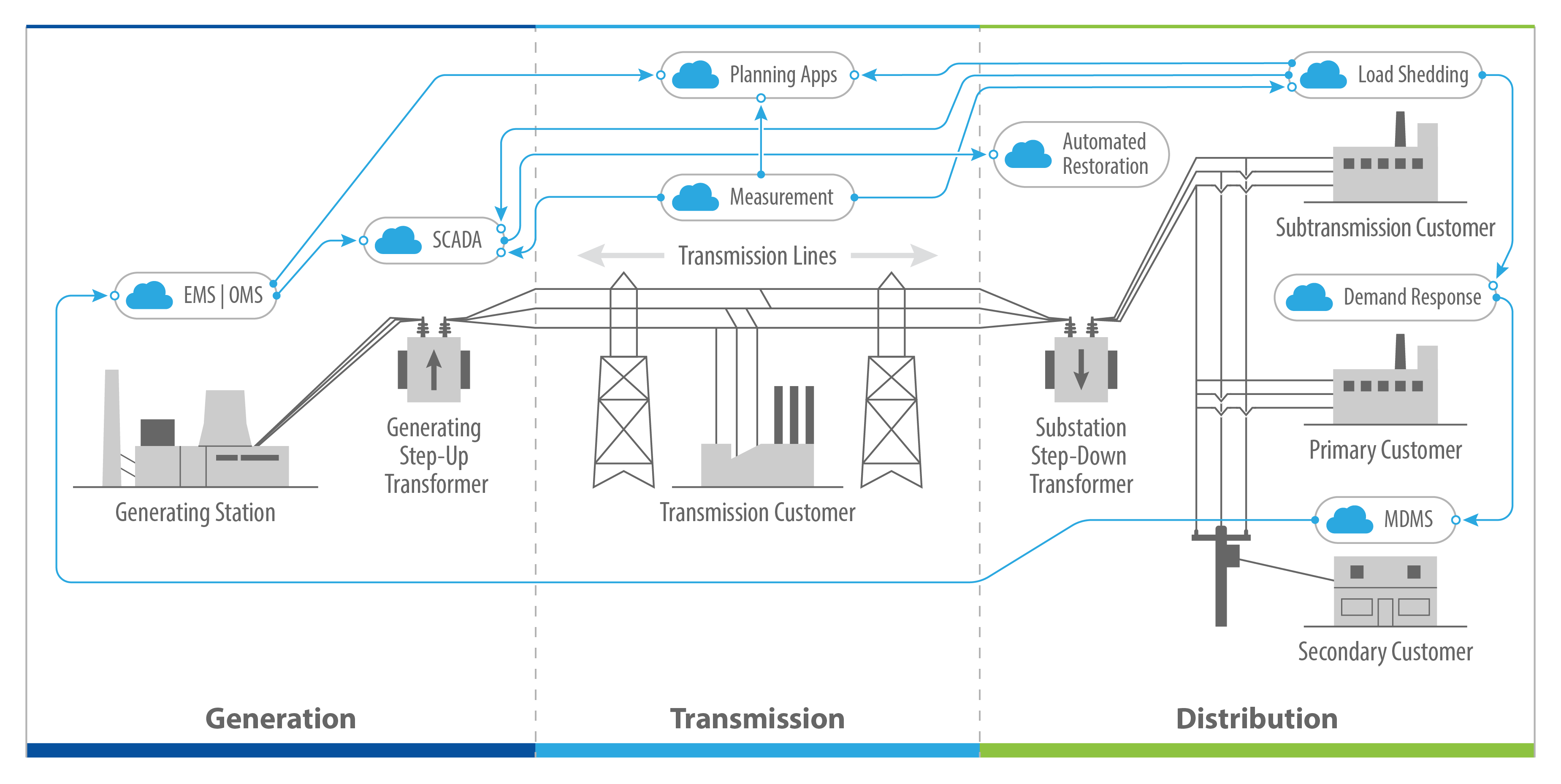CIRRUS Cloud Assessment
Center for Securing Digital Energy Technology
The Department of Energy’s Grid Deployment Office (DOE GDO) is spearheading a transformative initative with Idaho National Laboratory to enable the seamless integration of cloud technology into the grid of the future. This project outlines a comprehensive roadmap to strategize, guide research, and facilitate the deployment of cloud solutions in the digital energy transformation within the electric and interconnected grid systems. By harnessing cloud solutions, and deploying responsibly and securely we aim to bolster grid resilience, future-proof its operation, and support the transition towards a advanced and reliable electric grid.
A pivotal component of the Cirrus tool, the Cloud Integration Assessment, assesses the following categories:
- Identity and needs analysis.
- Application taxonomy and decomposition.
- Modernization goals and key performance indicators.
- Benefit and consequence analysis.
Consequence-Driven Approaches to Cloud-Enabling the Electric Grid

Use Case-Informed Framework for Utility Cloud Migration
This white paper outlines a detailed approach for evaluating the cloud readiness of utility companies. It is designed to create a strategic plan for moving towards a future grid system enhanced by cloud technology. The paper provides advice for those involved in the integration, ownership, and operation of these systems, focusing on a strategic rather than a simplistic binary approach to adopting cloud technologies.
Modern Electric Grid: An Interconnected Interdependent Cloud
- Traditional utilities are using cloud services to improve IT and OT capabilities, streamlining operations like data management and email.
- Utilities with dedicated OT systems are adopting cloud solutions to enhance operational efficiency.
- Utilities integrating OT systems are leveraging cloud solutions for rapid modernization and adaptation to digital applications.
- Third-party integrators are facilitating cloud adoption by providing systemwide cloud services for fleet orchestration.
- Software vendors are offering specialized cloud platforms tailored to the energy sector’s needs.
- Hardware vendors are exploring efficiencies through data collection and centralized cloud processing, offering new revenue streams through enhanced service agreements.
CIRRUS Framework
Testing against use cases and partnering users to enable adequate assessment of deployment plans.
The Cirrus framework is designed for teams considering either a transition or a first application in the cloud. This framework doesn’t provide a definitive yes or no; rather, it offers strategic guidance on how to prepare for, or deploy, a cloud solution responsibly. While that is not the entire industry, in the initial stages of planning new applications or furthering a larger more-mature entity’s strategy, consequence-based analyses provide an approach that can be communicated and discussed across senior leadership and the different technical levels of staffing.
The approach is based on resilient design and cyber engineering practices developed at Idaho National Laboratory—along with industry-informed input. The framework works through multiple stages.
- Understand who you are and your current profile of modernization and risk.
- Define applications and future plans along with risk tolerance.
- Evaluate consequence and benefit of the application and deployment you are considering, enabling prioritization of mitigations and solutions to challenges.
- Step through a series of questions and controls to enable a profile of capability to be formed.
- Summarize key issues to enable transition.
The output of this framework is:
- a profile of the utility’s risk,
- the benefits of cloud migration,
- the utility’s readiness, and
- considerations it must understand before and during deployment (including potential costs and questions to be asked when evaluating vendors or products),
- a key set of questions to ask at each stage and a process to undertake with other teams within the entity.
If it appears the readiness of the entity or user is below where it should be, a set of guidelines on how to increase readiness will be provided, and a reassessment will be performed once those are undertaken. Within the framework, training (commercially available, not custom), will be linked in the final results of the assessment based upon initial answers– to enable knowledge development in tandem with profile outputs. A workforce assessment will also be provided in the results to give an entity the capability of hiring or training the appropriately capable staff. The framework is designed to facilitate the cloud migration of small-to-medium electric utilities in the United States. The assessment encompasses several critical dimensions to ensure a smooth transition and effective deployment.

